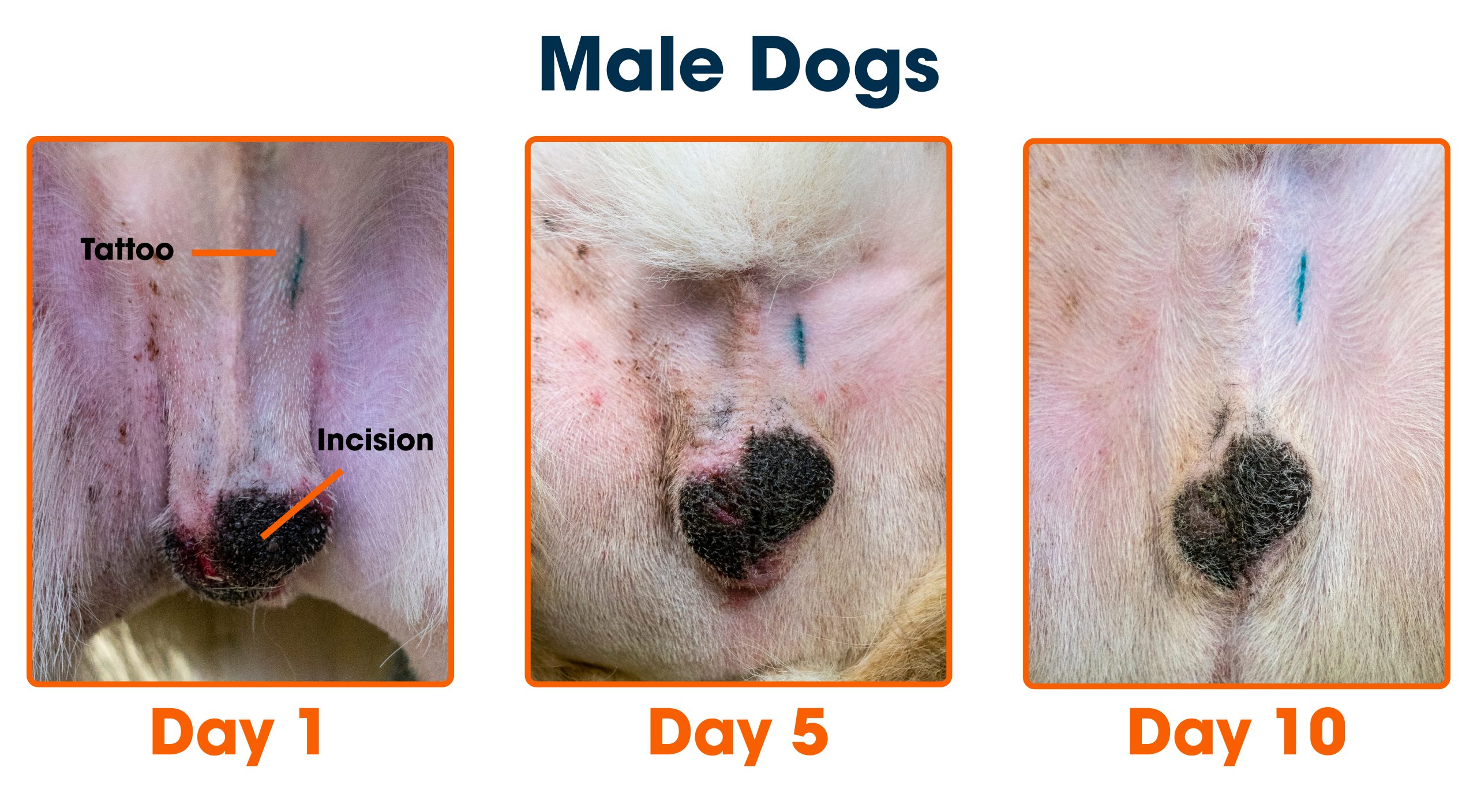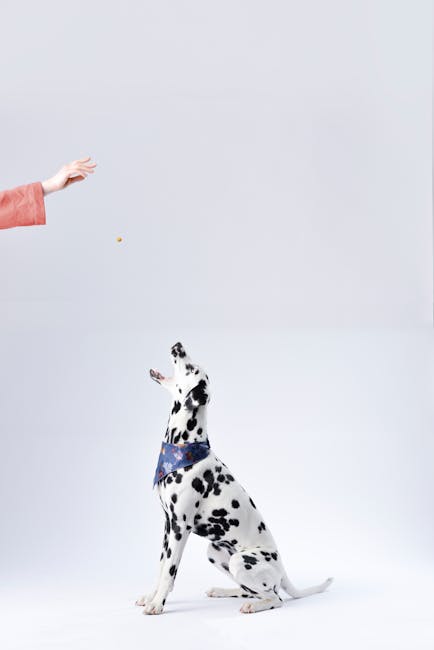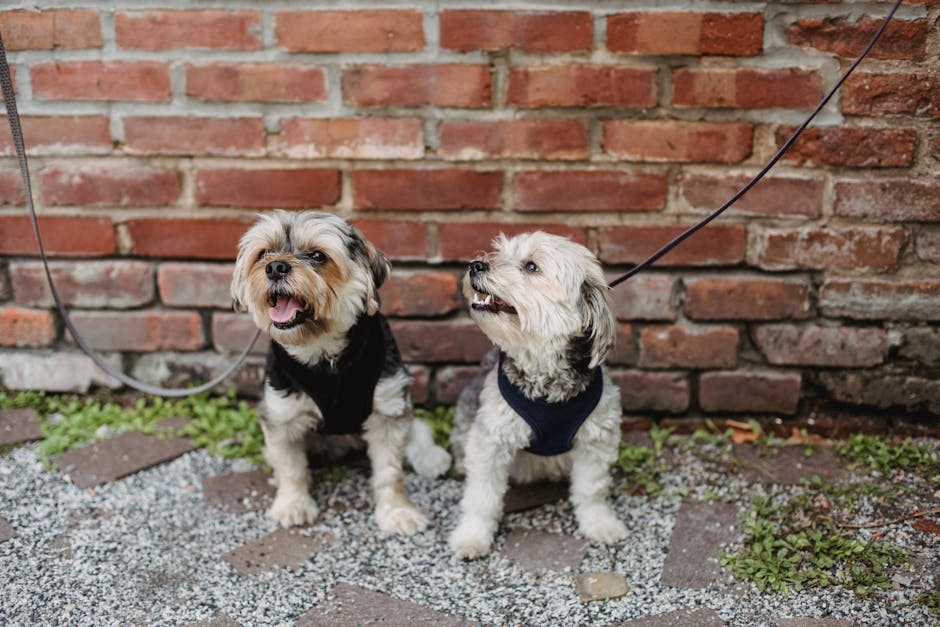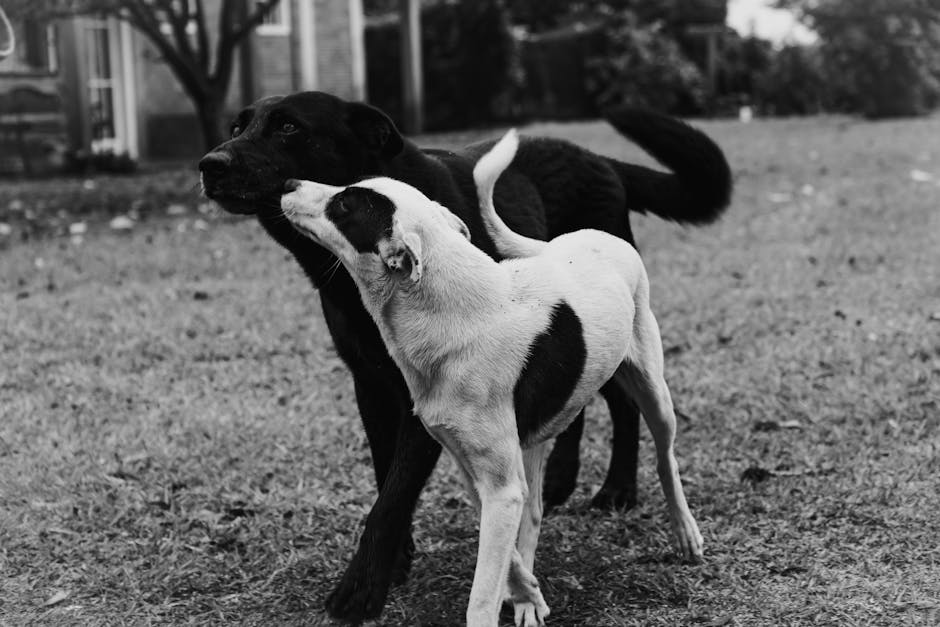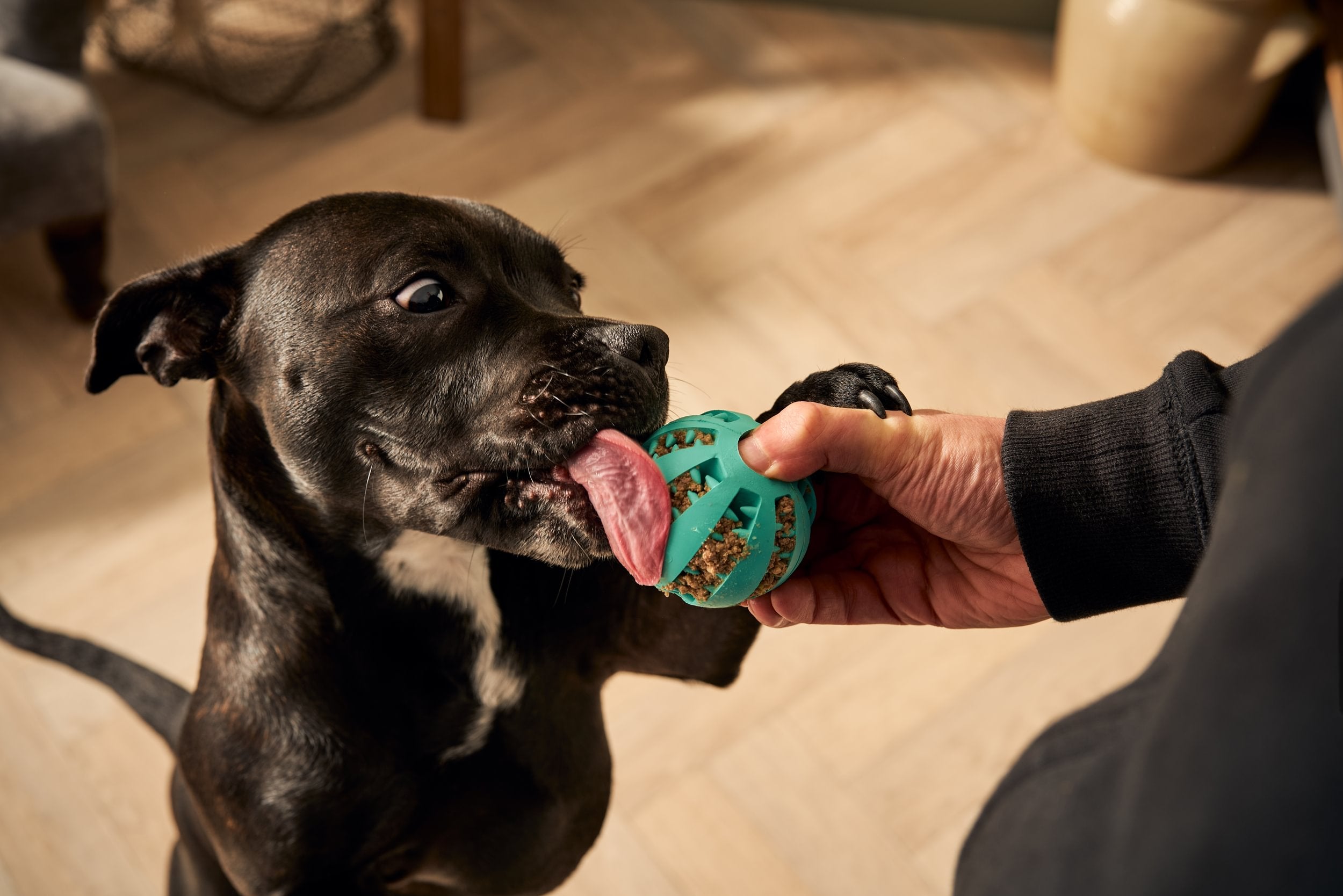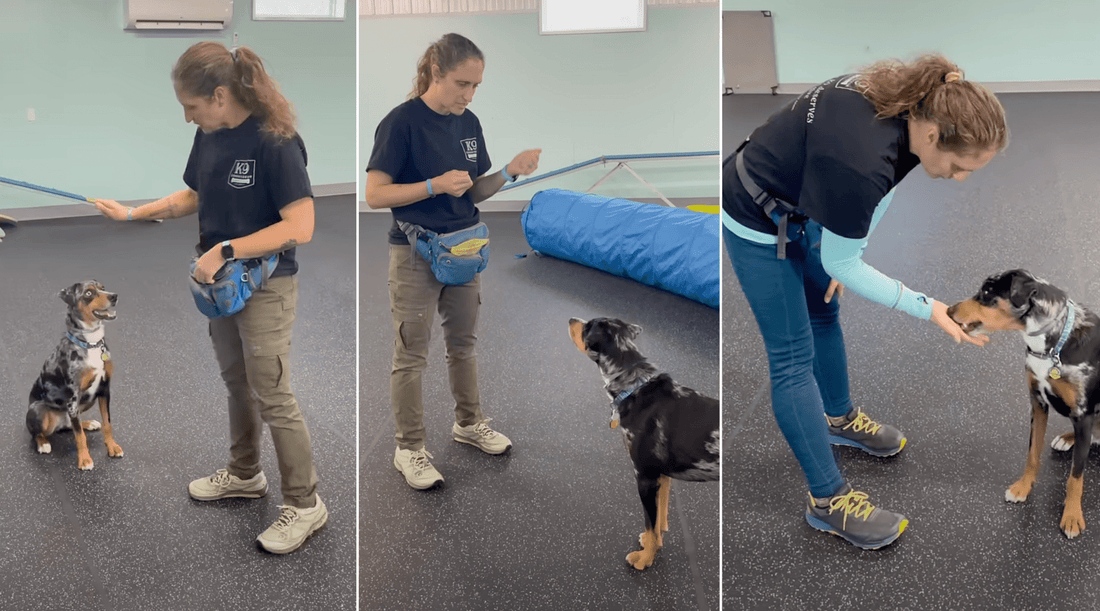Training your dog to obey isn’t just about commands—it’s about building a strong bond and making life easier for both of you. Imagine having a dog that listens the first time you call, stays calm around distractions, and walks by your side without pulling.
Sounds great, right? Whether you’re starting fresh or struggling with behavior issues, this guide will show you simple, effective steps to obedience train your dog. Keep reading, and you’ll discover how small changes in your approach can lead to big results.
Your well-behaved dog is closer than you think!
Benefits Of Obedience Training
Obedience training offers many benefits for both dogs and their owners. It helps create a clear line of communication and builds trust. Training also ensures your dog’s safety and improves their behavior in daily life. Understanding these benefits can motivate you to start training your dog right away.
Improved Communication
Training teaches dogs to understand commands clearly. Owners learn to give signals that dogs recognize easily. This clear communication reduces confusion and frustration. Dogs respond better to consistent commands. It makes daily life with your dog smoother and more enjoyable.
Strengthened Bond
Training time is also bonding time. Working together builds trust and respect. Dogs feel more secure and happy. Owners develop patience and understanding. This stronger bond creates a lifelong friendship between you and your dog.
Enhanced Safety
Obedience training helps keep dogs safe in many situations. Commands like “stop” and “come” can prevent accidents. Dogs learn to behave well around other people and pets. Training reduces the risk of dangerous behaviors. Safety improves for both your dog and those around it.

Credit: www.youtube.com
Principles Of Positive Reinforcement
Positive reinforcement is the heart of effective dog obedience training. It focuses on encouraging good behavior by rewarding your dog, making learning a positive experience. This approach builds trust and strengthens the bond between you and your furry friend.
Reward-based Methods
Rewards don’t have to be fancy. Treats, praise, or playtime can all serve as powerful motivators. Notice what excites your dog most and use that as a reward to reinforce good behavior.
For example, if your dog sits on command, immediately give a small treat or enthusiastic praise. This tells your dog exactly what action earned the reward.
Have you tried mixing rewards to keep your dog guessing and eager to learn? Changing rewards prevents boredom and keeps training fresh.
Consistency And Timing
Consistency is key in helping your dog understand what you expect. Use the same commands and reward patterns every time your dog performs correctly.
Timing matters a lot. Rewards must come right after the desired behavior, or your dog won’t connect the dots. Imagine praising your dog minutes later—it won’t make sense to them.
Try to be present and attentive during training sessions to catch good behavior the moment it happens. Do you notice how your dog reacts when you delay the reward?
Avoiding Punishment
Punishing your dog can create fear and damage your relationship. Instead of focusing on what not to do, guide your dog towards what you want them to do.
Redirect unwanted behavior by offering an alternative action and reward it. For example, if your dog jumps on guests, teach them to sit instead and reward that.
Think about how your dog feels during training—would they learn better with encouragement or fear? Positive reinforcement creates a safe space for learning and growth.
Choosing The Right Rewards
Choosing the right rewards can make a huge difference in how quickly and happily your dog learns obedience. Not all dogs respond the same way, so understanding what motivates your furry friend is key. Think about what excites your dog the most and use that to keep training sessions fun and effective.
Food Treats
Food treats are one of the most popular rewards for training. Dogs often find tasty snacks irresistible, which helps grab their attention and reinforce good behavior quickly.
Try small, soft treats that your dog can eat fast during training. This way, you keep the momentum without long breaks. Watch your dog’s preferences closely—some love cheese, others prefer chicken or peanut butter-flavored treats.
Praise And Affection
Not every dog is motivated by food. Some respond best to your voice and touch. Using praise like “Good job!” with a cheerful tone can encourage your dog to repeat the behavior.
Combine praise with petting, belly rubs, or gentle ear scratches. This builds a strong emotional bond and shows your dog that you value their effort. You might notice your dog’s tail wagging more during training when you add affection.
Toys And Playtime
For energetic dogs, toys and playtime can be powerful rewards. A quick game of fetch or tug after a command reinforces obedience with fun.
Choose toys your dog loves, whether it’s a squeaky ball or a rope toy. Play breaks can also help release energy and keep your dog focused. Have you ever seen a dog light up when you bring out their favorite toy? That excitement can drive learning better than treats or praise alone.

Credit: www.youtube.com
Basic Commands To Teach
Teaching basic commands builds a strong bond with your dog. It helps your dog understand what you expect. Training makes daily life easier and safer. Start with simple commands to keep your dog focused and confident.
Use clear words and consistent signals. Reward your dog with treats or praise to encourage good behavior. Practice commands in short sessions to hold your dog’s attention.
Sit And Stay
“Sit” is one of the easiest commands to teach. Hold a treat above your dog’s nose. Move it back slowly over their head. Your dog will naturally sit to follow the treat. Say “sit” clearly as they lower their bottom. Give the treat and praise immediately.
“Stay” helps your dog wait patiently. Ask your dog to sit first. Show your palm and say “stay.” Step back slowly. If your dog stays, reward right away. Increase distance and time gradually. Always return to your dog before giving the treat.
Come And Heel
“Come” brings your dog to you quickly. Use a happy voice and say “come.” Show a treat or toy to make it exciting. When your dog arrives, give a big reward. Practice in safe, enclosed spaces.
“Heel” means walking close to your side. Start with your dog on a leash. Walk forward and say “heel.” Use treats to keep your dog by your side. Stop walking if your dog pulls ahead. Reward when your dog stays close and calm.
Leave It And Drop It
“Leave it” prevents your dog from picking up bad things. Show a treat in your closed hand. Say “leave it” and wait. When your dog stops trying, give a different treat. Repeat until your dog ignores the first treat.
“Drop it” helps your dog release items from their mouth. Offer a treat and say “drop it.” Trade the item for the treat. Praise your dog for letting go. Practice with safe toys or objects.
Training Techniques And Tips
Effective obedience training relies on techniques that keep your dog focused and eager to learn. Training should be simple and clear, helping your dog understand what you expect. Consistency and kindness build trust and make the process enjoyable for both of you. Use these tips to create a positive learning experience for your dog.
Short And Frequent Sessions
Dogs have short attention spans. Keep training sessions brief, around 5 to 10 minutes each. Train multiple times a day to reinforce learning. Short sessions prevent your dog from getting bored or tired. Frequent practice helps commands stick better in your dog’s mind.
Gradual Progression
Start with easy commands like “sit” and “stay.” Once your dog masters these, move to harder tasks. Increase difficulty slowly to avoid confusion. Break big tasks into smaller, manageable steps. Celebrate small wins to keep your dog motivated and confident.
Patience And Encouragement
Training takes time and patience. Your dog learns at its own pace. Use a calm voice and gentle praise to encourage good behavior. Avoid punishment, which can cause fear and resistance. Reward with treats, toys, or affection to make learning positive and fun.
Troubleshooting Common Challenges
Training a dog takes patience and practice. Sometimes, challenges arise that slow progress. Recognizing and addressing these issues helps keep training on track. Troubleshooting common problems improves both your dog’s behavior and your bond.
Addressing Behavioral Issues
Some dogs show stubbornness, fear, or distraction. These behaviors can block learning. Notice what triggers your dog’s reactions. Use calm, firm commands to guide them. Reward small wins to build confidence. Avoid punishment, which may increase fear or aggression.
Adjusting Training Strategies
Each dog learns differently. Change your approach if progress stalls. Shorten training sessions to hold attention. Use treats or toys that your dog prefers. Repeat commands clearly and consistently. Practice in quiet places before moving to busy spots.
Seeking Professional Help
Sometimes problems need expert advice. Trainers can offer personalized guidance. They observe your dog’s behavior closely. Group classes also build social skills and obedience. Don’t hesitate to ask for help. Early support leads to better results.
Maintaining Long-term Loyalty
Maintaining your dog’s loyalty over the long term requires more than just initial obedience training. It’s about creating a lasting connection built on consistency, learning, and trust. This ongoing effort keeps your dog engaged and eager to follow your guidance throughout their life.
Regular Practice
Consistency is key to keeping obedience skills sharp. Short daily sessions, even just 5-10 minutes, help your dog remember commands and respond quickly.
Try mixing familiar commands with new challenges to prevent boredom. For example, practice “sit” in different environments or around distractions to reinforce reliability.
Have you noticed how your dog reacts when you skip training for a few days? That’s a clear sign regular practice matters.
Continuous Learning
Dogs thrive when they keep learning. Introducing new commands or tricks keeps their mind active and prevents behavioral issues caused by boredom.
Try teaching your dog useful skills like “leave it” or “go to your spot.” These commands enhance safety and comfort for both of you.
Remember, learning isn’t just for puppies. Older dogs can benefit greatly from new challenges too.
Building Trust
Trust forms the foundation of loyalty. Your dog needs to feel safe and understood to stay committed to obeying you.
Use positive reinforcement like treats, praise, and affection to encourage good behavior. Avoid harsh punishments that can damage your relationship.
Think about times your dog looked to you for guidance during stressful situations. That bond of trust is what keeps obedience strong.

Credit: www.akc.org
Frequently Asked Questions
What Is The Best Age To Start Obedience Training A Dog?
Puppies as young as 8 weeks can start basic obedience training. Early training builds good habits and social skills. Consistent sessions help dogs learn commands effectively. Starting young ensures easier behavior management later.
How Long Does Obedience Training Take For A Dog?
Training duration varies by dog breed and consistency. Basic commands usually take 4-6 weeks to learn. Regular short sessions speed up progress. Patience and repetition are key for lasting obedience.
Which Commands Are Essential For Dog Obedience Training?
Start with “sit,” “stay,” “come,” “heel,” and “down. ” These commands ensure safety and control. They form the foundation for advanced training. Mastering these basics improves communication between owner and dog.
How Can I Prevent My Dog From Being Distracted During Training?
Use high-value treats to keep your dog’s focus. Train in quiet, low-distraction environments initially. Gradually introduce distractions as your dog improves. Consistent rewards encourage attention and obedience.
Conclusion
Training your dog takes patience and daily practice. Start with small steps and be consistent. Praise your dog often to encourage good behavior. Use clear commands and keep training sessions short. Remember, every dog learns at its own pace. Stay calm and positive throughout the process.
Obedience training builds trust between you and your dog. It makes life easier and more fun for both. Keep practicing regularly, and your dog will improve. Enjoy the journey of training and bonding together.

